The last time I saw Michael Stipe he had a beanie hat on and was wandering between the tents at the Extinction Rebellion camp in Trafalgar Square, in London. It was early evening in October 2019, and we had just finished an interview at a nearby hotel.
The fashion designer Erdem Moralioglu had arrived with his twin sister, Sara, to take Stipe to dinner, but Stipe wanted to check out the protest first. The crowd-phobic Moralioglu wasn't sure, but Stipe was almost skipping with excitement. Both scenes – heading off for a meal with his world-renowned artistic friend and mixing with young grungy activists – were exactly his thing.
We had met to discuss Stipe's second book of photography, Our Interference Times, which he'd created with the author Douglas Coupland. It was a hefty tome that explored the dissonance between the analogue and the digital. (If that sounds pretentious, the book was very accessible.) It was a follow-up to Volume 1, published in 2018, made with the curator Jonathan Berger. That book was more intimate: only 35 pictures, including ones of a young River Phoenix, and Kurt Cobain's hands.
On our Zoom call their apartment stretches out behind Stipe, open-plan, with a kitchen to the left and large windows to the right. Every inch of visible wall space has art on it
Now it’s time for Stipe’s third, which he made (mostly) on his own, and is called Michael Stipe. It’s a mixture of portraits of friends, family and figures who inspire him; photographs by Stipe, plus images of pots and book jackets he commissioned to honour people he admires.
He’s speaking to me today from the New York apartment he shares with his long-term boyfriend, Thomas (pronounced Tohma) Dozol, who is also a photographer. On our Zoom call their apartment stretches out behind Stipe, open-plan, with a kitchen to the left and large windows to the right. Every inch of visible wall space has art on it; there are sculptures and piles of books. Dozol is padding around in the background, occasionally coming into view, and when he’s about to leave the apartment Stipe excuses himself to give him a kiss.
Stipe, in square specs and a bright T-shirt, shows me his new book. “This is my only copy,” he says. “I had it in my backpack and I was walking from my studio. It was pissing rain and it got soaking wet. But look, it’s held up well!”
He’s proud of the book’s toughness? “Yes, I am. I’m proud of it full stop; it’s such a beautiful piece.” He flicks through the pages, holding them up to the camera with a smile. “Look at the blue! It came out so well!” His expression is constantly shifting, his feelings (pride, worry, humour) flickering across his face, like the shadows from moving clouds.
Stipe, who is 61, is best known as a singer, but his band REM broke up in 2011. He's a full-on, all-in person, and the band (one of the most respected and influential indie bands ever) had been a full-on, all-in project for 31 years. For a while after the split he stopped making music altogether, though he has released a couple of singles, including No Time for Love Like Now with Aaron Dessner of The National, which came out in early 2020 and almost seemed to predict lockdown: "When did this all begin to change?/ The locked-down memories can't sustain/ this glistening, hanging free fall".
Abruptly, Stipe had to become domestic: organising and caring, doing practical and maintenance jobs that he hadn't done for years. 'It takes up a lot of time. And also, like everyone else, I found I couldn't concentrate
What he has done in his decade of non-music time is make art: mostly photography, though he also creates sculpture and video. The life of an artist suits him (“It feels like the real me; I don’t find music particularly easy. Photography, for me, is much easier”) and pre-pandemic he would spend his days in New York in his studio.
Though he keeps musician’s hours, getting up at 11am and going to bed at 5am, creating physical items appeals to him. “My life’s work with music is intangible,” he says. “It’s creativity that you cannot touch. And so making things that you can touch – a vase that you can hold, a book you can put it on the shelf, say – for me, that’s fascinating.”
He has always taken photographs (some were used in REM's imagery), and he collects some, too. So his first and second books involved several archive pictures, but he planned for the third volume to be different: he would take a series of portraits of people he felt exhibited "immense strength, combined with a very open vulnerability". His wishlist of subjects consisted entirely of women and included Patti Smith and Greta Thunberg.
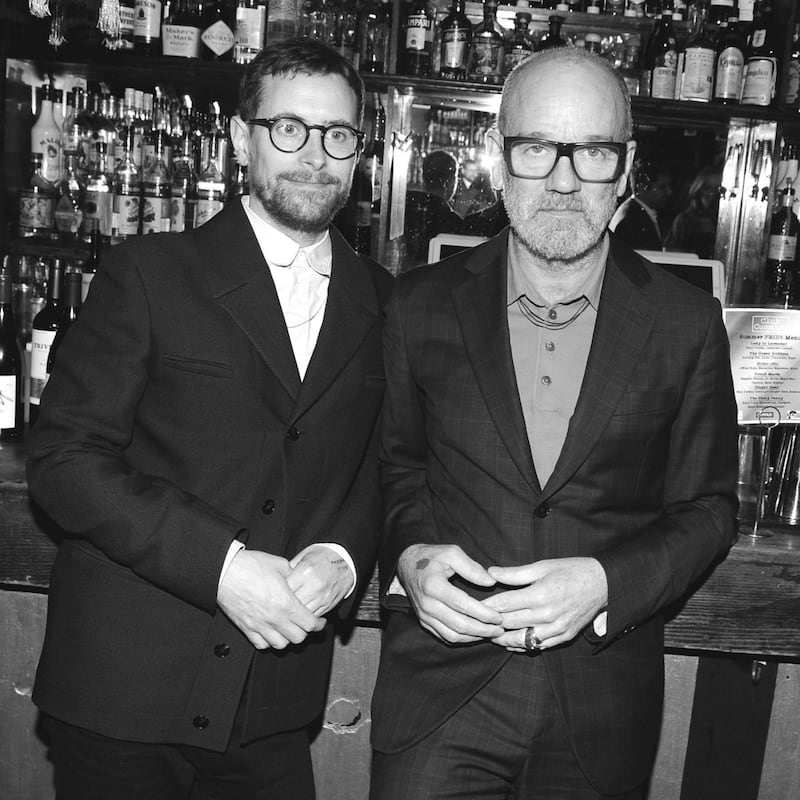
He started work on the book in 2019. First up was the writer Joan Didion, but she declined his approach. Stipe didn't mind, but Didion's polite refusal led him to wonder if he could include her in a different way. For a while he put that thought to one side and concentrated on photographing those who had said yes. In his New York studio he took pictures of the actor Tilda Swinton. In London, at Moralioglu's wedding, he spontaneously snapped the singer Beth Ditto.
All the while he was carrying some other pictures with him, photos he'd recently taken of his friend John Giorno, an artist and poet, at Giorno's exhibition opening, in August 2019. Giorno, who was once Andy Warhol's lover, and appeared in REM's last music video (for We All Go Back to Where We Belong), died while Stipe was in Europe. His death changed the nature of Stipe's photography project.
“I had the rolls of film in my bag, and the moment he died I thought, I need to include John,” he says. So he expanded the book’s concept to include people other than women – “to degender the project”, as he puts it. All the people he wanted to feature “are, for me, insanely heroic. The work that they’ve done, their activism, their art.”
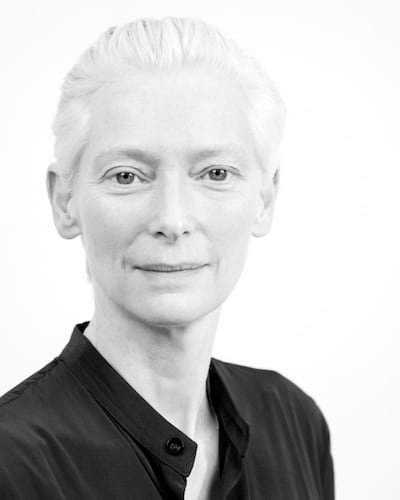
Stipe’s list of strong-but-vulnerable subjects grew. Meanwhile, his life (like everyone’s) was about to shrink. Back in the United States, in March 2020, Stipe was out of New York when Dozol tested positive for Covid-19. (He recovered well.) He decided not to return immediately and instead went to Athens, Georgia, where his mother, sister and uncle live. “The decision was about family,” he says. “My mother had some difficult health issues.” He ended up staying for a while.
Abruptly, Stipe had to become domestic: organising and caring, doing practical and maintenance jobs that he hadn’t done for years. “Climbing ladders, replacing lightbulbs, cleaning out gutters, mowing the lawn, doing the dishes, cleaning and mopping.” How was that? “It takes up a lot of time,” he says. “And also, like everyone else, I found I couldn’t concentrate. I couldn’t focus on anything.”
He started listening to podcasts, which he had never done before, finding his way there via some taped conversations he had of Lou Reed talking to the music producer Hal Willner. Stipe's listening choices are very him: shows about art and queer issues. He loves 99% Invisible (about design), Your Undivided Attention (on the way social media manipulates us), Against Everyone (a countercultural show from the former sex worker Conner Habib), Still Processing (a New York Times culture podcast), LaunchLeft (established artists recommend new ones, hosted by Rain Phoenix), Not Really (a gossipy gay New York podcast), Homo Sapiens (Alan Cumming and Christopher Sweeney's queer interview show), Talk Art (Russell Tovey and Robert Diament chat art collecting) and New Models.
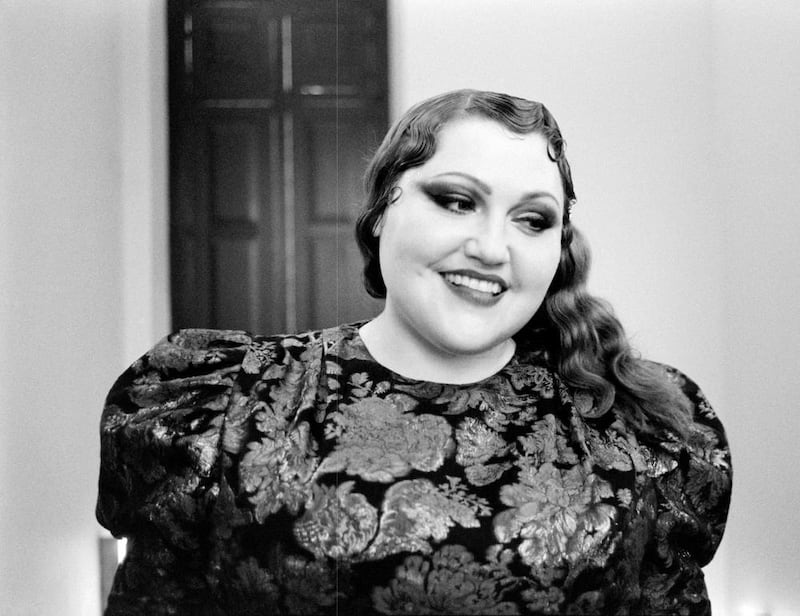
"New Models is this fascinating, very high level of academic conversation, about technology and activism, and politics, and art. They're talking in a language that is so above my pay grade. I feel the same as when I listen to Wagner. I don't know exactly what I'm hearing, but I feel better and smarter for having listened to it."
Listening to podcasts and doing his chores, he considered what to do with his new book. Under lockdown he couldn’t take anyone’s photograph (he didn’t want to do Zoom portraits) and couldn’t collaborate with the artist-curator he had originally wanted to be involved. So he decided to work in a different way.
Stipe had already commissioned some vases from a ceramicist named Caroline Wallner, with a view to using them in an art exhibition. He asked her to put names on them, and they became a way of making a portrait of some of the people he wanted in the book: Mick Jagger, Lou Reed and Cate Blanchett.
He also got in touch with a New York printmaker he knew, and asked her to make some book covers with people’s names on them (including Didion’s). He rekindled an old interest in fonts, and designed some of his own. The book Michael Stipe is now a combination of new portraits, photos of vases and book covers with names on them and lists of names printed in fonts designed by Stipe.
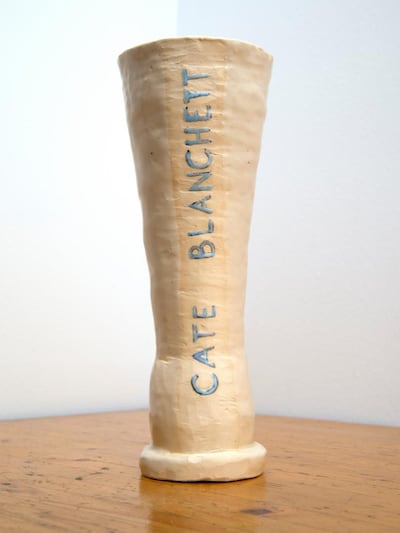
It’s a lot freer than the original idea, and, in his head, it has become a chronicle of lockdown. “The things that were impacting me wound up making their way in,” he says. “The book just expanded and expanded.” There’s even a podcasty element: if you scan the QR codes on various pages, they lead to audio recordings of Stipe musing on why he included certain pictures, his thinking behind their placement.
The book becomes more about family as it goes on: pictures of close friends such as Sam and Aaron Taylor-Johnson give way to snaps of his sister and his mum – who is fine, despite the pandemic worries. “My mum’s going gangbusters again, and she’s great.” On one page there’s a lovely vintage picture of a couple: these are Stipe’s grandparents.
"My grandmother and her brother would jump on the train from Mississippi and go to New Orleans on the weekend," says Stipe. "She had flapper clothes and she danced. That's her and my Papi, the two of them madly in love." He had another grandfather, who, he says, was a preacher. "And I know I can get very preacher-ilian and hectoring. I got it, too, I got it honest, as we say."
I wouldn't call Stipe hectoring: he just listens hard and answers carefully and fully. What he seems is sensitive, worried, unable to be glib. Stephen Colbert of The Late Show has described Stipe as "vibrating in reaction to the world", and that seems right. As a singer he seemed to mainline emotion, and though he has a light, almost flirty social presence, he can't laugh off horrible politics or cruelty, or climate change.
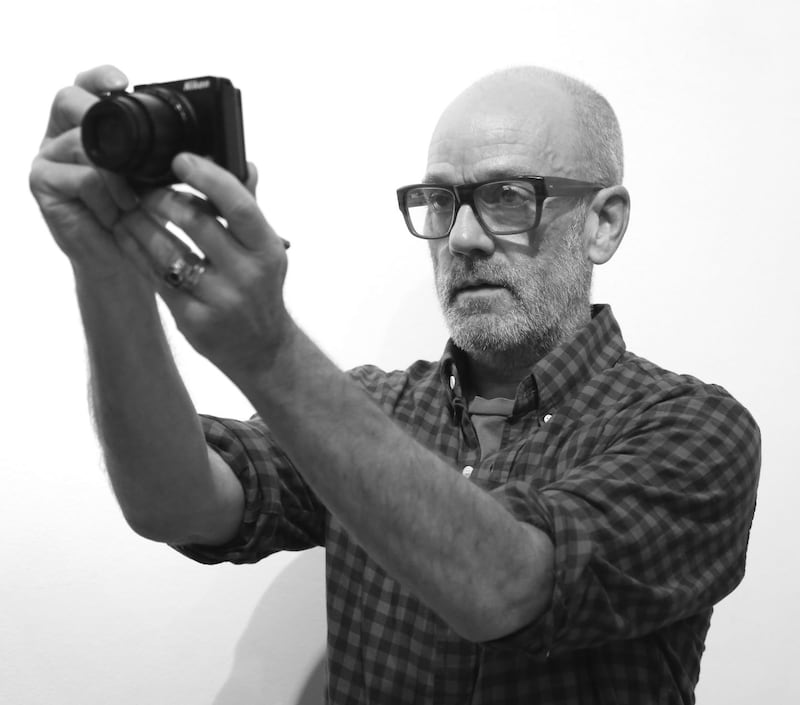
Actually, the world affects him so much that, a few years ago, he was advised by a therapist to stop watching the news; he came off social media about three years ago, too, and stayed off. He used to post jokey pictures of himself on Instagram with famous friends, but with the other person cropped out, so the image was just of him grinning madly. He hates social media now.
"It's so upsetting to me that it took the end of the years of Trump as president for Twitter and Jack Dorsey to finally decide that Trump had said something that was offensive on Twitter, and [his account] needed to be suspended," he says.
“That platform allowed Trump a voice that put wind under his sails, and allowed for the type of disgusting behaviour that earmarks those years, and allowed a pandemic to run ravage across our country and across the world. It’s an embarrassing and horrifying chapter of our history. This stupid male idea of power, it’s so dumb.”
He warms to his theme: “It’s saddo and dumdum. We’re on a second-grade level here: Saddo and Dumdum. We’re better than this. Americans, you know, we’re particularly good at showing our asses publicly. But when I say we, I mean all of us. We’re better than this.”
This is the preacher-ilian mode he was talking about earlier, and it hovers quite near the surface. Still, that’s not to say he can’t take a joke. When earlier this year the Guardian asked Stipe whom he would most like to apologise to, he said: “Anyone I slept with before the age of 27, because I was a selfish, cold-ass bitch.”
Would he care to explain? “Well, it was me trying to be funny,” he says now, “but I was an incredibly insecure and selfish young man. I don’t think I was pleasant to be around, and I don’t think I was a very good lay. It took me the better part of my 20s to recognise that insecurities are actually a superpower, and something that I can utilise to allow my better work to come out of me. I don’t have to be snipy and cynical. Cold-ass bitch was a coat that I put on to protect myself, and I realised I can take that coat off now.”
Lockdown is the only time I've never felt Fomo. I'm always, 'Where's the party, where are the exciting people?'
It sounds as if he was just scared. “I’m a very fearful person. Truthfully, a lot of what this book is about is the people who represent fearlessness to me.”
When it comes to fearlessness, Stipe has always taken a lot of strength from his friendship with Patti Smith, whom he admired when he was young and is still delighted to be friends with. He shows me a mask of William Blake with writing scrawled over it; a gift from Smith. "She's the one who said to me, 'At some point, you need to walk unafraid,'" he says. "And I turned that phrase into a song about exactly that [REM's Walk Unafraid]. But that fierce fearlessness is something that I still look to. To show me the way, to pull me away from the parts of myself that allow me to be absorbed into fear. And to run towards the thing that scares you the most. As a creative person, that's maybe a superpower."
Because he admires artists so much, Stipe loves operating in a high-art friendship zone and enjoys telling tales about this, resulting in some heavy-duty name-dropping. For instance, he tells me that, every summer, he and Dozol go on holiday to France with the artist Sophie Calle. (There's a picture of Calle in the book, with the Irish hotelier and businessman Paddy McKillen.) "Oh my God, I was terrified to meet Sophie at first," he says. "Her work is amazing, ripping apart the facade that people put up and seeing what's behind it. But she's got this wicked, fierce sense of humour."
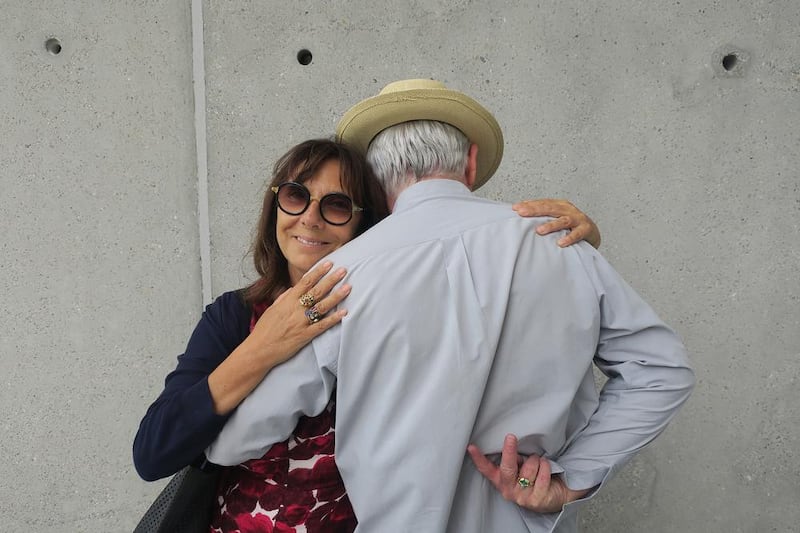
Anyway, one time Calle was in New York, and Stipe arranged to meet her at an art opening. He asked where she was staying, and she said Canal Street, at Laurie Anderson’s. And at that time Stipe lived on Canal Street and was friends with Anderson; he was delighted by the coincidence. After the show, Anderson said, “Do you mind if I call Lou?” (Lou Reed, her husband, who died in 2013).
"So she called Lou, and he showed up, and then I was, like, 'I told Patti Smith I was going to see her.' So Patti showed up, and my friend Tom Gilroy. We all sat there, in this little tapas bar in Soho. Lou Reed, Laurie Anderson, Sophie Calle, Patti Smith, myself, and my best friend, Tom."
Stipe is clearly extremely chuffed with getting all these people together: “Lou and Tom were sat next to each other, and they started talking about film. And then it went deep, into indie film-makers no one’s ever heard of before. It was amazing to watch.”
Stipe is never happier than when he’s in a room full of clever, artistic types. His life, pre-lockdown, was unbelievably social. “Yes, lockdown is the only time I’ve never felt Fomo,’ he says. “I’m always, ‘Where’s the party, where are the exciting people?’” His extended stay in Athens was a completely other life and it has taken a while to adjust back to the city. “This is a very different space to being in my house alone.”
I know that I'm, like, head-in-the-sky guy, and it sounds really naive, but, you know: it really is all about love
He tells me about some parties where he met famous people. He went to a Vanity Fair Oscars do in the mid-1990s, invited by an agent friend, where he met Gore Vidal. "He's so tall. So handsome. He's f**king Gore Vidal. And I'm, like, looking up at him like this" – he pulls a face of extreme awe – "My reaction was to get away. I turned, and who was standing two feet from me? Nancy Reagan. With her hair all fluffed up. I screamed! I shrieked like a cartoon woman on a table with a mouse."
At the dinner he was sitting next to the film director William Friedkin, who didn't talk to him because Stipe wasn't in the movie business. But Stipe enjoyed himself anyway. "I wound up drinking quite a lot. And I went around the room and I sat down with people. I was, like, "Shirley MacLaine, I want to tell you about my dreams." I made a real mess of myself. But I did get to congratulate Dolly." (Dolly Parton was nominated for an Oscar for writing I Will Always Love You, Whitney Houston's version of which was in the film The Bodyguard.)
Stipe has put a Parton vase in his book, opposite a Laurie Anderson one, because he thought they have a lot in common. “I put people together in the that I thought would really appreciate each other’s company.” And this is what his book is about, I think; staging a vast virtual party, full of people that Stipe would like to see, or hang out with, or see hang out with each other; to meet even if they are dead. Lockdown has meant he can create his ideal event, full of the beautiful, the clever, the artistic, the brave, the activist. His family and everyone who inspires him, and he thinks we should admire. The best party ever.
"We need all of these minds, pushing us to be a better version of ourselves," he says. "This is our learning period. We've just come through this terrible thing together that indicated how much we are all connected. I hope that what comes out of this is something that helps to elevate all of us, and to show ourselves to ourselves, show ourselves to each other." He realises he sounds a little Pollyanna-ish, and his expression changes again, silliness and self-deprecation scudding across: "I know that I'm like, head-in-the-sky guy, and it sounds really naive, but, you know: it really is all about love." – Guardian
Michael Stipe is published by Damiani Editore

















